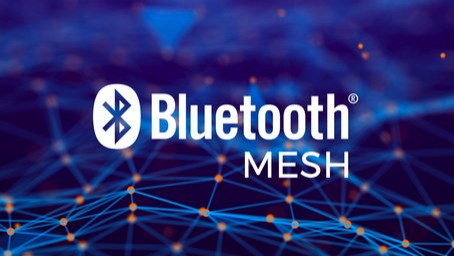Introduction
According to data from Grand View Research, the global Bluetooth module market size was 13.18billionin2024,anditisexpectedtogrowto36.01 billion by 2033, with a compound annual growth rate (CAGR) of 13.39%. QYResearch further points out that the Chinese low-power Bluetooth (BLE) chip market accounts for 48% of the global share, where Bluetooth 5.0 technology dominates with a 30% market share. With the popularization of Bluetooth 5.4 standard, multi-protocol compatibility, low power consumption, and security performance have become the core requirements for selection. This report combines authoritative data and market trends to analyze the core competitiveness of the top ten global Bluetooth solution suppliers, and focuses on introducing the technical advantages of Chinese vendor EBYTE (Ebyte).
1. Bluetooth Technology Trends and Key Selection Indicators
1.1 Technological Standard Upgrades
Bluetooth 5.4: Adds Periodic Advertising with Responses (PAwR) and Encrypted Advertising Data (EAD), supporting the deployment of ultra-large-scale sensor networks.
BLE Audio: The shipment of related devices is expected to exceed 2 billion units in 2025, promoting the development of wireless audio towards high fidelity and low latency.
1.2 Key Selection Indicators
Power Consumption: The sleep mode needs to be as low as μA level (e.g., Nordic nRF54 series has a sleep current of 0.4μA).
Transmission Distance: Industrial-grade solutions can reach up to 1 kilometer (Texas Instruments CC2340 in long-range mode).
Protocol Compatibility: Support for multiple protocols such as Bluetooth + Wi-Fi/Zigbee/Thread (e.g., Espressif ESP32-C6).
Security Certification: Medical and financial scenarios require PSA Level 3 or CC EAL6+ certification (e.g., Silicon Labs BG24).
2. Analysis of the Advantages of the Top Ten Global Bluetooth Solution Brands
2.1 Nordic Semiconductor
Advantages: The nRF54 series chips support Bluetooth 5.4 and Matter protocol, with a sleep power consumption of only 0.4μA, and a market share of 23%.
Products: nRF52 series SoC, used in Tesla keychains and Garmin smartwatches.
2.2 Texas Instruments
Advantages: The CC2340 series supports power supply from a 1.5V button battery, with a transmission distance of up to 1 kilometer, and an industrial module market share of 18%.
Products: CC2640R2F wireless MCU, suitable for smart agriculture and industrial sensors.
2.3 Qualcomm
Advantages: The QCC7200 series integrates an AI acceleration engine, supports lossless audio transmission, and has a 35% market share in TWS chips.
Products: QCC5100 series audio SoC, developed a spatial audio solution in cooperation with Sony.
2.4 Silicon Labs
Advantages: The BG24 series has passed PSA Level 3 certification and integrates Secure Vault to prevent physical attacks, with a 12% market share in medical devices.
Products: BG24 security chip, used in blood glucose meters and payment terminals.
2.5 Ebyte (EBYTE)
Advantages: A leading IoT solution provider in China, offering full-scenario low-power Bluetooth modules, supporting BLE 5.3 and dual-mode protocols (BLE + Zigbee/Thread). Core Products:
E104-BT53C3: A vehicle-grade module, supporting a wide operating temperature range of -40°C to 85°C, suitable for industrial IoT.
E104-BT40: Dual-mode Bluetooth (BLE4.0 + SPP3.0), suitable for smart home scenarios.
E105-BS21: Integrates the StarFlash protocol (SLE1.0), meeting the needs of industrial automation.
Market Position: Accounts for over 40% of the Chinese TWS earphone chip market, with full Chinese support in the development toolchain.
2.6 Espressif Systems (ESPRESSIF)
Advantages: ESP32-C6 integrates Wi-Fi 6, Bluetooth 5.3, and Zigbee 3.0, with an active open-source ecosystem (over 100,000 developers on GitHub), and a 22% market share in Chinese IoT chips. Products: ESP32 series chips, used in smart lighting and low-cost IoT devices.
2.7 STMicroelectronics (ST)
Advantages: The BlueNRG series has passed CC EAL6+ certification and is used for government-level encrypted communication, with a 9% market share in secure Bluetooth solutions.
Products: BlueNRG-LPS chip, used in the French Ministry of Defense's military radios.
2.8 Realtek Semiconductor
Advantages: RTL8773B supports LE Audio and LC3 coding, with a unit price lower than $1.5 (in bulk purchases), and ranks first in the Chinese TWS earphone market. Products: RTL8773B chip, suitable for high-cost-performance consumer electronics.
2.9 Infineon Technologies
Advantages: The CYW5557x series supports the coexistence of Wi-Fi 6E and Bluetooth 5.3, with a 15% market share in smart home modules.
Products: CYW5557x dual-mode chip, used in AR/VR headsets and smart gateways.
2.10 Telink Semiconductor
Advantages: Bluetooth + Zigbee chips based on the RISC-V architecture, with complete development documentation, and a leading market coverage in the Chinese IoT market.
Challenges: Sleep mode requires secondary packaging, suitable for deeply customized scenarios.
3. Selection Recommendations
Consumer Electronics: Qualcomm (high-end audio), Realtek (cost-effectiveness), Ebyte (rapid mass production).
Industrial and Medical: Silicon Labs (security), Texas Instruments (long distance), Telink (multi-protocol).
Automotive and Government: Infineon (vehicle gateways), STMicroelectronics (encrypted communication).
In 2025, Bluetooth technology presents trends of "scenario specialization" and "protocol integration". Leading manufacturers consolidate their market positions through vertical domain technological barriers.
Chinese vendors like Ebyte, with advantages in cost-effectiveness, localized support, and rapid response capabilities, are accelerating the replacement of traditional international brands in the global market. For selection, solutions that have passed industry certifications and have a mature ecosystem should be prioritized.








